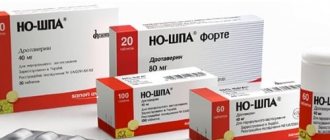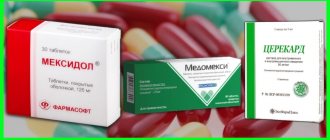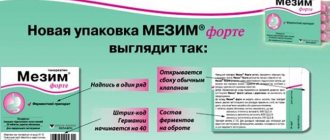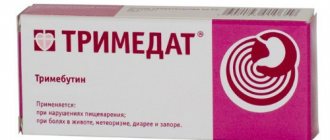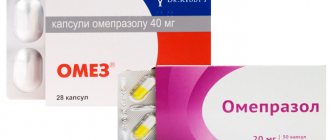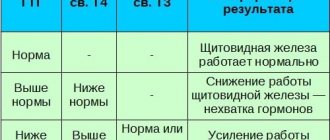The pharmaceutical market is filled with many pharmaceutical drugs designed to compensate for impaired functions of the gastrointestinal tract. Choosing an enzymatic agent that can alleviate symptoms caused by pancreatic pathology is an extremely difficult task. Very often the question arises about prescribing one of two medications - Festal or Mezim, which only a doctor can best advise!
Briefly, the pancreas and its functional insufficiency
The pancreatic gland is an organ that performs exocrine and endocrine functions. The gland secretes a number of important enzymes necessary for adequate absorption of incoming food (amylase - for the digestion of carbohydrates, lipase - for the purpose of breaking down animal and vegetable fats, protease - for the breakdown of proteins into amino acids and their passage through the intestinal mucous barrier).
Exposure to any negative factors (alcohol abuse, poor diet, sedentary lifestyle, lack of constant physical activity, autoimmune diseases, infectious and inflammatory pathologies) can lead to disruption of the synthesis of one or all groups of enzymes and, as a result, to digestive problems.
The first symptoms of deficiency may be:
- feeling of heaviness and discomfort in the epigastric region;
- periodic pain in the upper quadrants of the abdomen;
- bloating and increased gas production;
- nausea and vomiting that occurs after any errors in the diet (consumption of fatty, fried, spicy, salty, spices);
- stool disorders such as diarrhea;
- general weakness and malaise, physical inactivity;
- loss of body weight due to impaired absorption of nutrient particles.
How to use
These medications are taken orally during or after meals. The exact dosage is indicated in the instructions. The tablets should be taken with plenty of warm water. The following liquids should not be used for this purpose:
- tea;
- coffee;
- milk;
- sparkling or mineral water.
If the condition worsens, you should review your diet and eliminate sour, salty, fatty and spicy foods. Each of these drugs can be taken for a long time.
https://youtu.be/rEP3RGIC9aA
Characteristics of drugs
Both drugs are intended to compensate for the lack of enzymes, correct the functions of the gastrointestinal tract and regulate the activity of the pancreatic gland. Mezim and Festal restore appetite and reduce the severity of dyspeptic disorders.
The components included in the production of medicines are obtained from the pancreas of cattle (cows, bulls, goats, sheep) and contain pancreatin - a substance consisting of protease, lipase and amylase.
The drugs are enteric-coated and their effect begins only from the moment they enter the intestine, where they are normally excreted through the major duodenal papilla.
Reviews
Alexandra, 36 years old, Yaroslavl: “Several years ago, problems with the digestive system began. To avoid complications, you have to adhere to a strict diet. During breakdowns I take Festal or another drug with a similar effect. I didn’t feel any difference between the medications, because they all quickly cope with unpleasant symptoms.”
Evgeniy, 50 years old, Moscow: “I treated digestive problems with the help of domestic and foreign medicines, but chose Festal. I take it after eating fatty or spicy foods. Other pills only increase the feeling of heaviness.”
Tatyana, 48 years old, Nizhny Novgorod: “After removing the gallbladder, the doctor prescribed Festal. I don’t use it all the time, but only in exceptional cases. It brings relief quickly and does not cause side effects.”
Victor, 50 years old, Krasnoyarsk: “I recommend taking Pancreatin after a heavy meal. It solves the problem in less than 1 hour. With this medicine I can afford to eat fatty foods.”
Composition of medicinal products
Despite the almost identical production method, the qualitative and quantitative enzymatic composition undergoes significant differences.
| Mezim |
|
| Festal |
|
Is it worth changing Pancreatin to Festal?
Despite the fact that there is a difference between Festal and Pancreatin, medications are means to compensate for enzymatic deficiency and improve digestive function.
If we compare the annotations for medications, the majority will choose Festal, but this will not always improve the quality of treatment: in some conditions, increased bile outflow can harm the body.
If for some reason you were unable to buy Pancreatin, then you should not drink Festal without a doctor’s prescription. It is better to choose Mezim, which has a similar enzyme content, but differs slightly in the composition of the shell. But Mezim costs more.
Indications for use
Both medications are indicated for the correction of gastrointestinal problems caused by enzymatic insufficiency of the pancreas.
However, Festal has a higher range of indications, since it contains components of animal bile and is additionally used to compensate for impaired functions of the liver or biliary tract.
| Mezim |
|
| Festal |
|
What and when and for whom is it better to use Mezim or Festal?
It is very difficult to determine which remedy is better, since it is inexpensive and available to everyone without a doctor’s prescription. When you have problems with cholelithiasis, it is better to take Mezin, since Festal contains bovine bile, which can provoke the movement of stones and blockage of the bile ducts.
Mezim can be taken during lactation , and the risk of taking it while breastfeeding will be zero. Nursing mothers can take this drug only with the consultation of a doctor, because side effects may occur not only for the mother, but also for the baby. Children under 3 years of age are strictly prohibited from taking Mezim, because it will cause an increase in temperature and result in severe diarrhea.
Festal is taken before an x-ray or before an ultrasound of the abdominal area . This remedy can be taken during lactation, and women can also take it during pregnancy. Festal is prescribed by therapists to restore the stomach after a diet. Taking such a pharmaceutical product is prohibited for children under 3 years of age, and can have serious consequences.
Taking Mezim and Festal should be consulted with a doctor during breastfeeding and pregnancy, as well as for children under 3 years of age.
Contraindications for use
Restrictions on use differ for both drugs, and their volume is determined by the components of the composition.
| Mezim |
|
| Festal |
|
Differences between drugs
Festal and Mezim can be bought at any pharmacy without presenting a prescription from a doctor. But before you purchase one of the products, you need to find out how they differ.
The first difference is the composition of Mezim and Festal:
- Festal contains 3 active ingredients: pancreatin, hemicellulose and bovine bile. The lipolytic activity of pancreatin in the drug is 6000 OD. E.F., amylolytic – 4500 OD. E.F., proteolytic – 300 OD. E.F. Each dragee contains 0.005 g of hemicellulose, and 0.025 g of bovine bile powder.
- Mezim Forte, unlike Festal, contains only one active substance - pancreatin, extracted from the pork pancreas. Each tablet of the drug contains from 93 to 107 g of pancreatin, which exhibits lipolytic activity - 3500 OD. E.F., amylolytic – 4200 OD. E.F. and proteolytic – 250 OD. E.F.
Pancreatin improves and accelerates digestive processes and the absorption of proteins, fats and carbohydrates in the intestines. Hemicellulose affects the breakdown of plant fiber and normalizes intestinal microflora. Bile emulsifies fats and increases lipase activity.
There are also differences in the composition of the excipients, but this practically does not matter. The exception is individual intolerance to one or more of them.
The second difference between drugs is the manufacturer. It would seem that this is not a very important characteristic of the drug, but often the quality of the drug depends on it.
- Festal is manufactured by Sanofi India Limited.
- Mezim is produced by the famous German company Berlin-Chemie.
If we consider this indicator when choosing, then Mezim Forte deserves more trust.
The release forms also differ:
- Festal is produced in the form of dragees with a white shell.
- Mezim is produced in pink-coated tablets.
Contraindications for the drugs are also slightly different:
- Mezim is not prescribed for hypersensitivity to its components, acute pancreatitis and intestinal obstruction.
- Festal has more contraindications, which are caused by the presence of bile in the composition. Its use is prohibited in case of hypersensitivity to the components, intestinal obstruction, acute pancreatitis, jaundice, cholelithiasis and acute hepatitis.
Side effects of drugs
| Mezim |
|
| Festal |
|
Frequency of administration, dose
Only a doctor can determine how long and in what dosage to take Festal.
If the cause is overeating, a single dose of the drug is possible. The recommended dose is 1-2 tablets, which should be taken with a sufficient amount of water. The maximum frequency of administration is 3 times a day. In case of chronic diseases of the digestive system, the doctor independently selects a treatment regimen. The course of treatment can last up to a month, after which the doctor assesses the patient’s condition, and if necessary, treatment continues.
